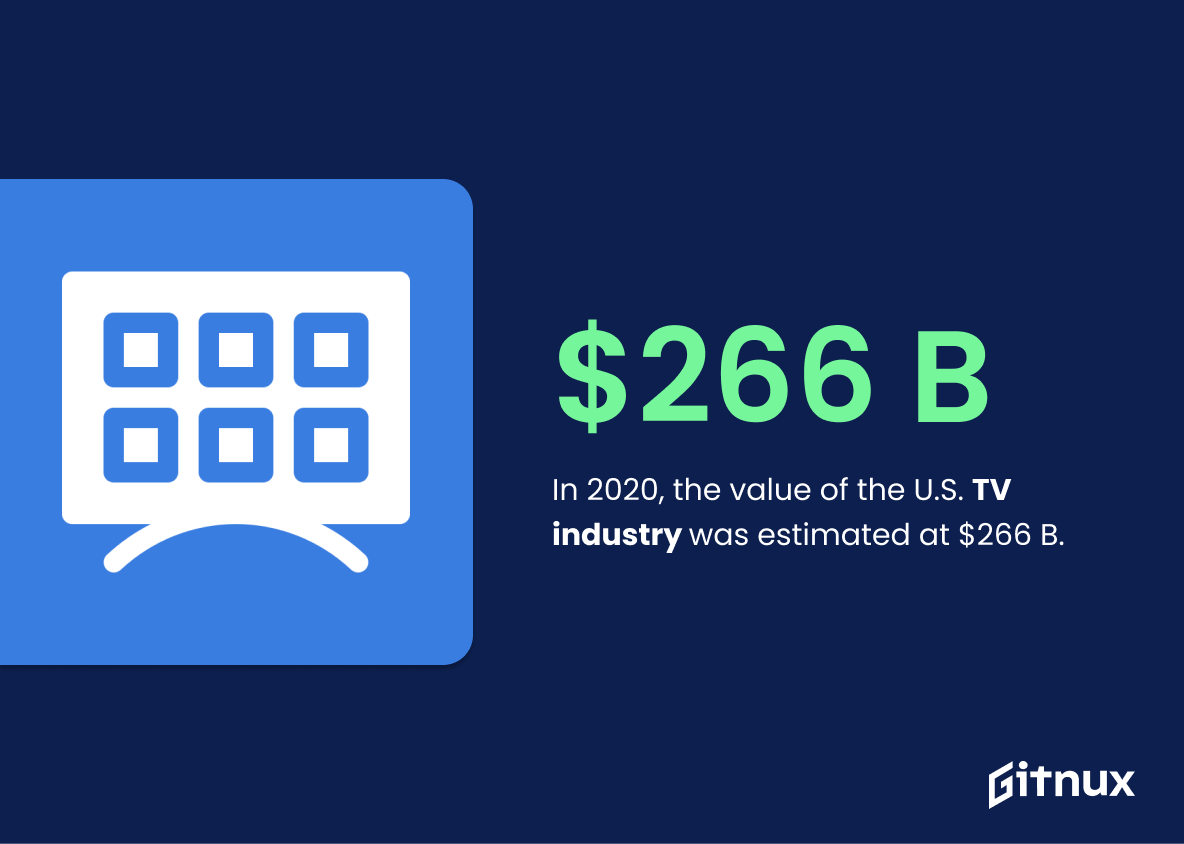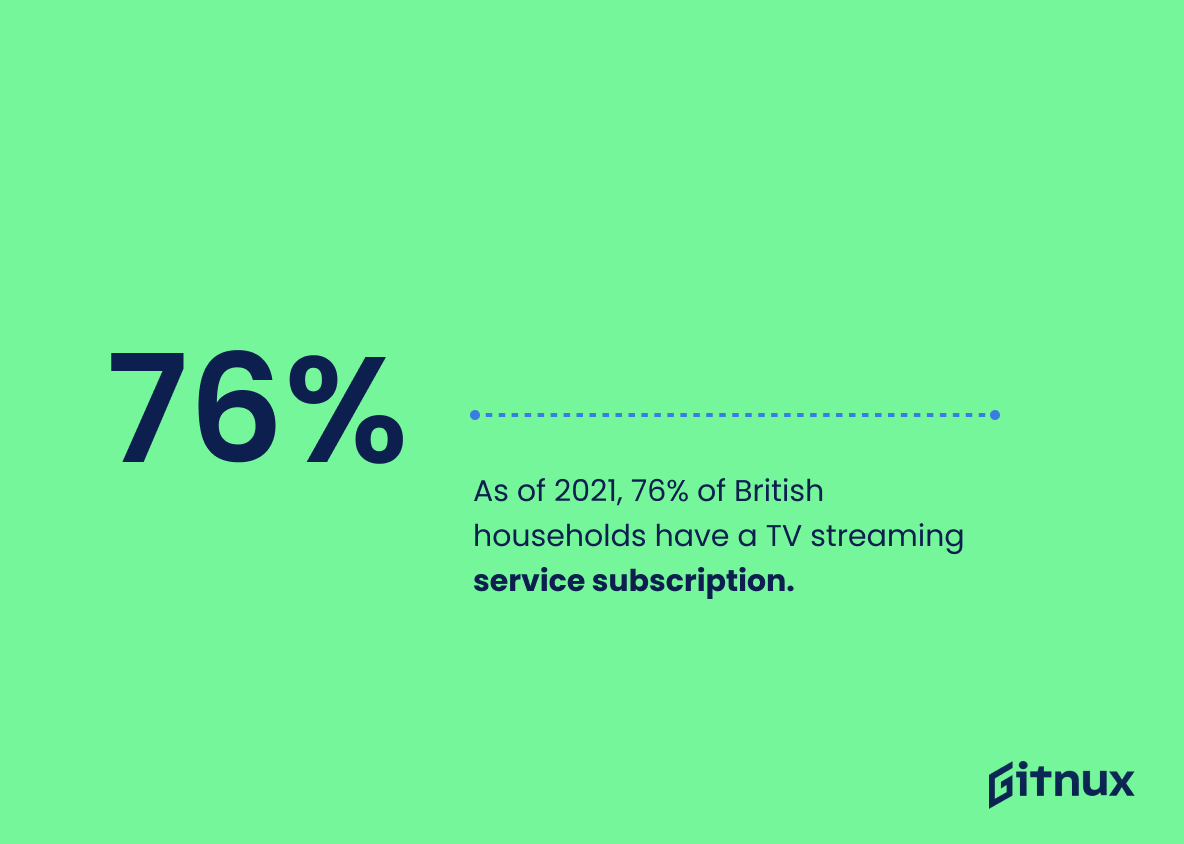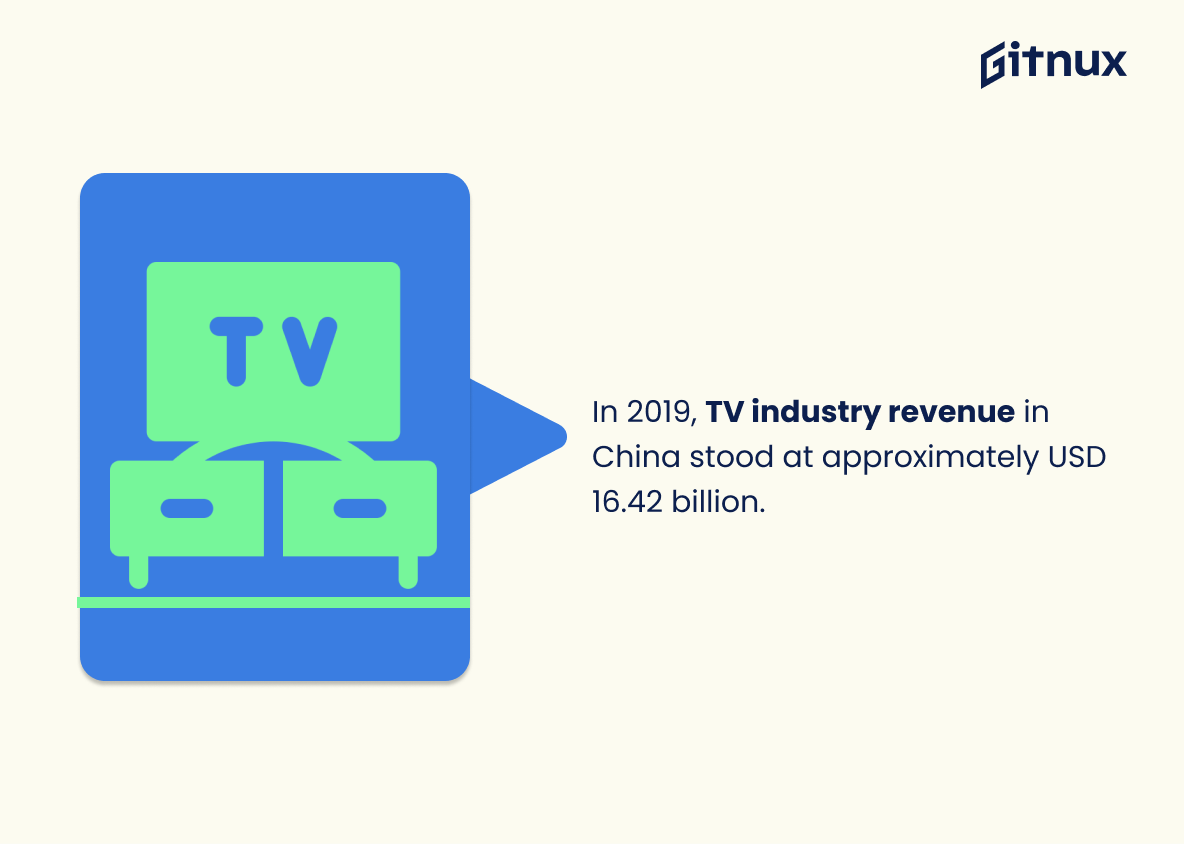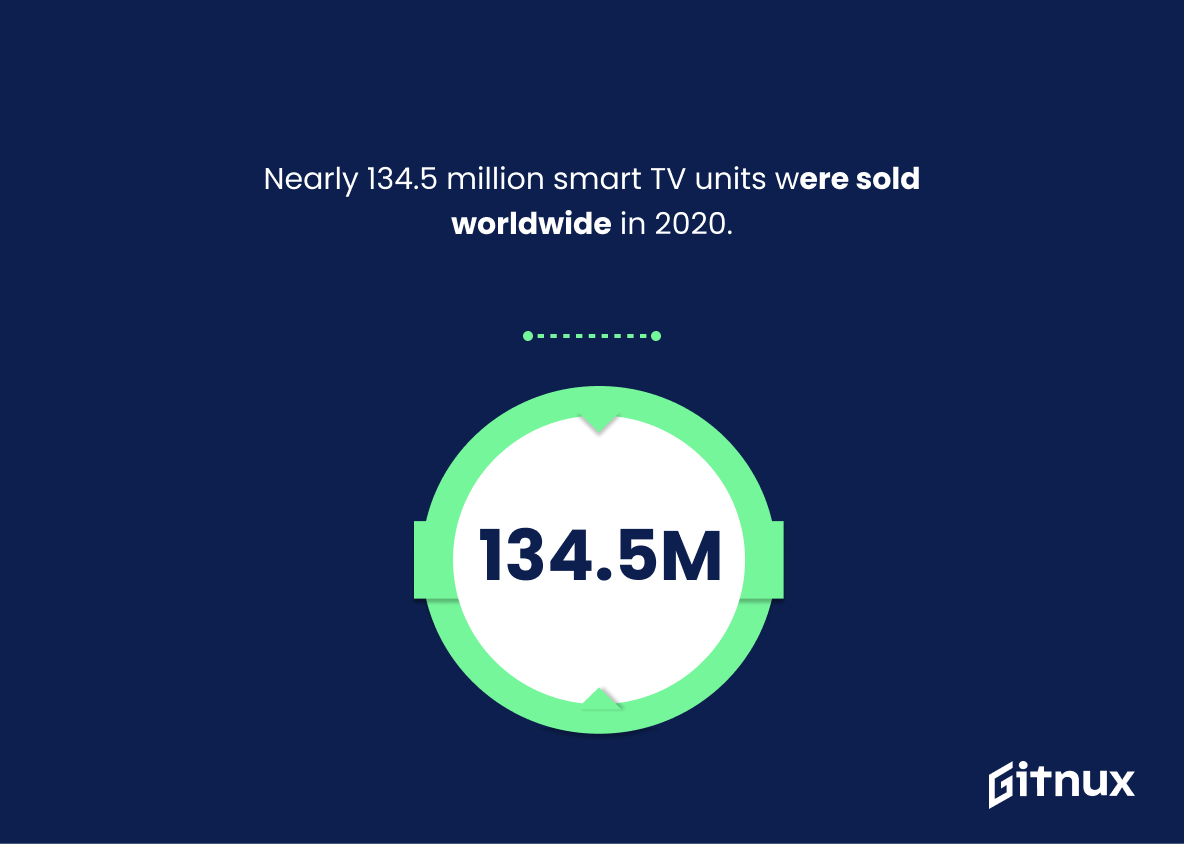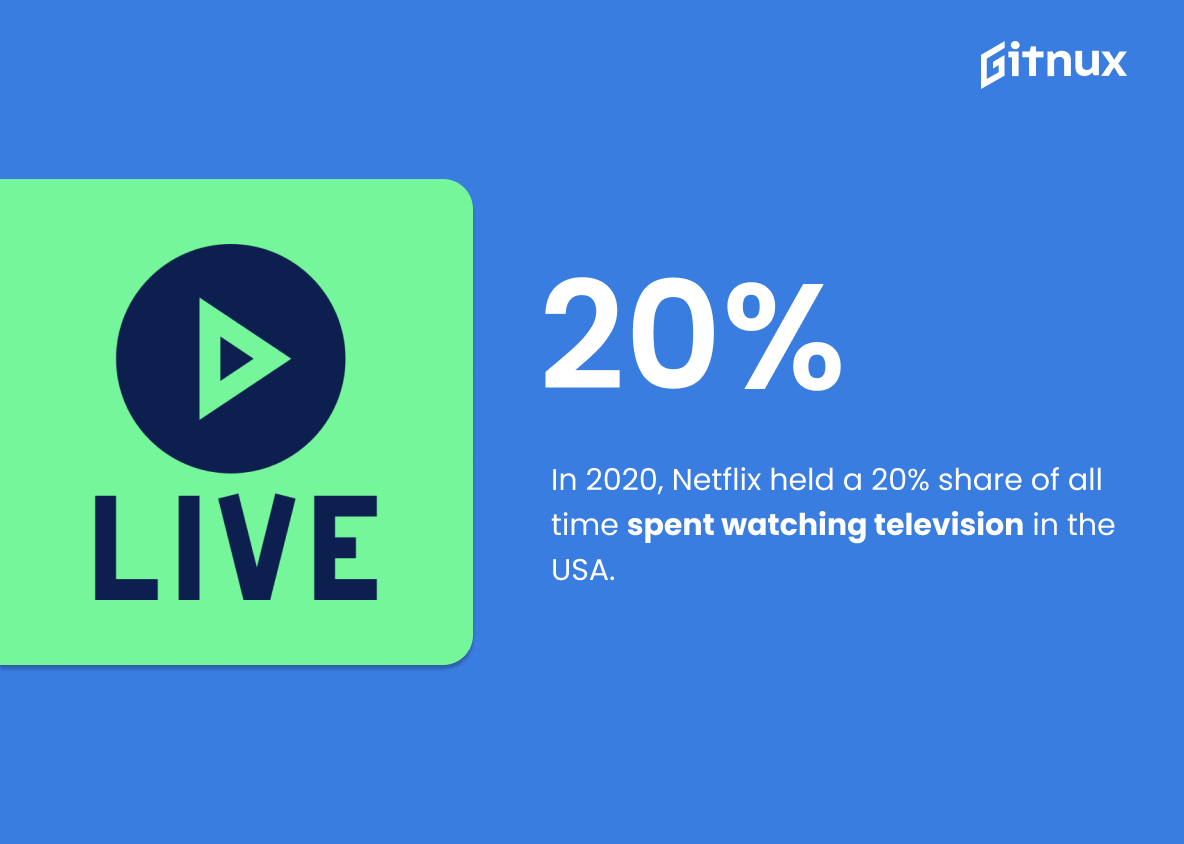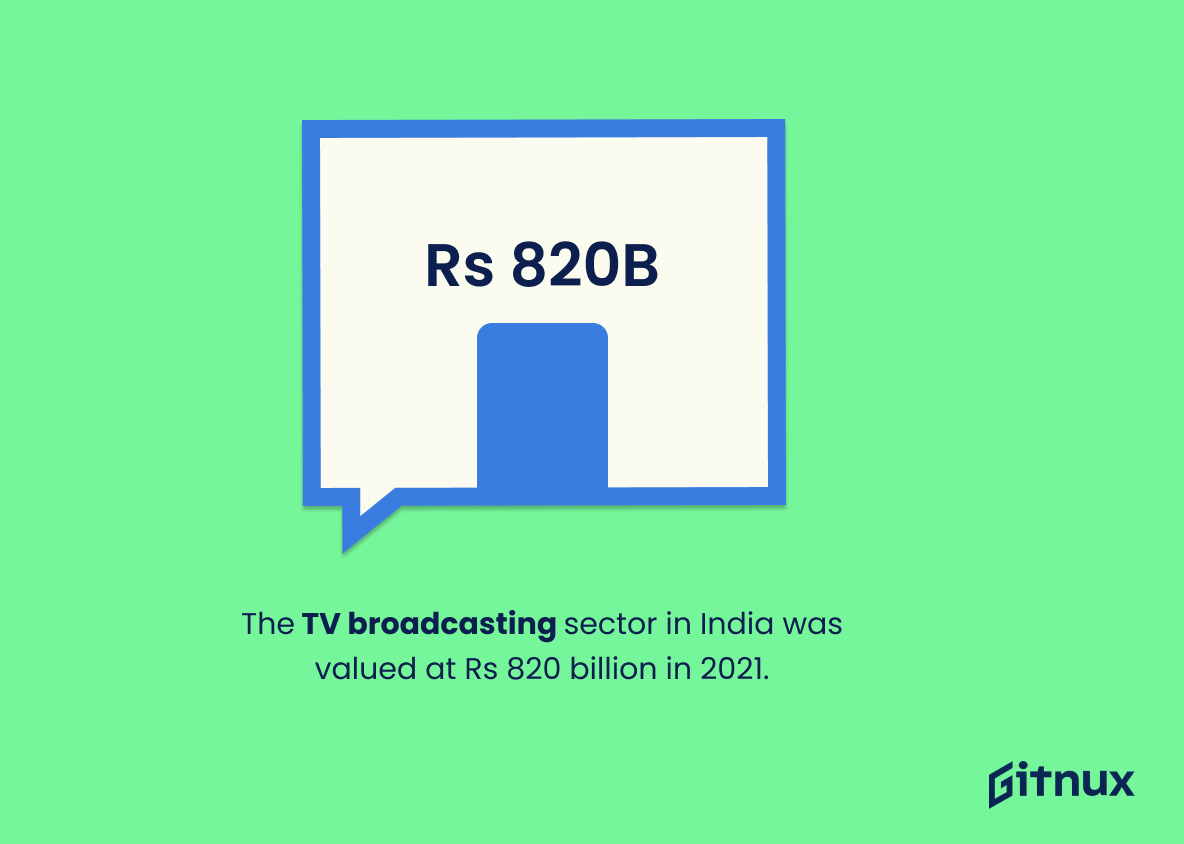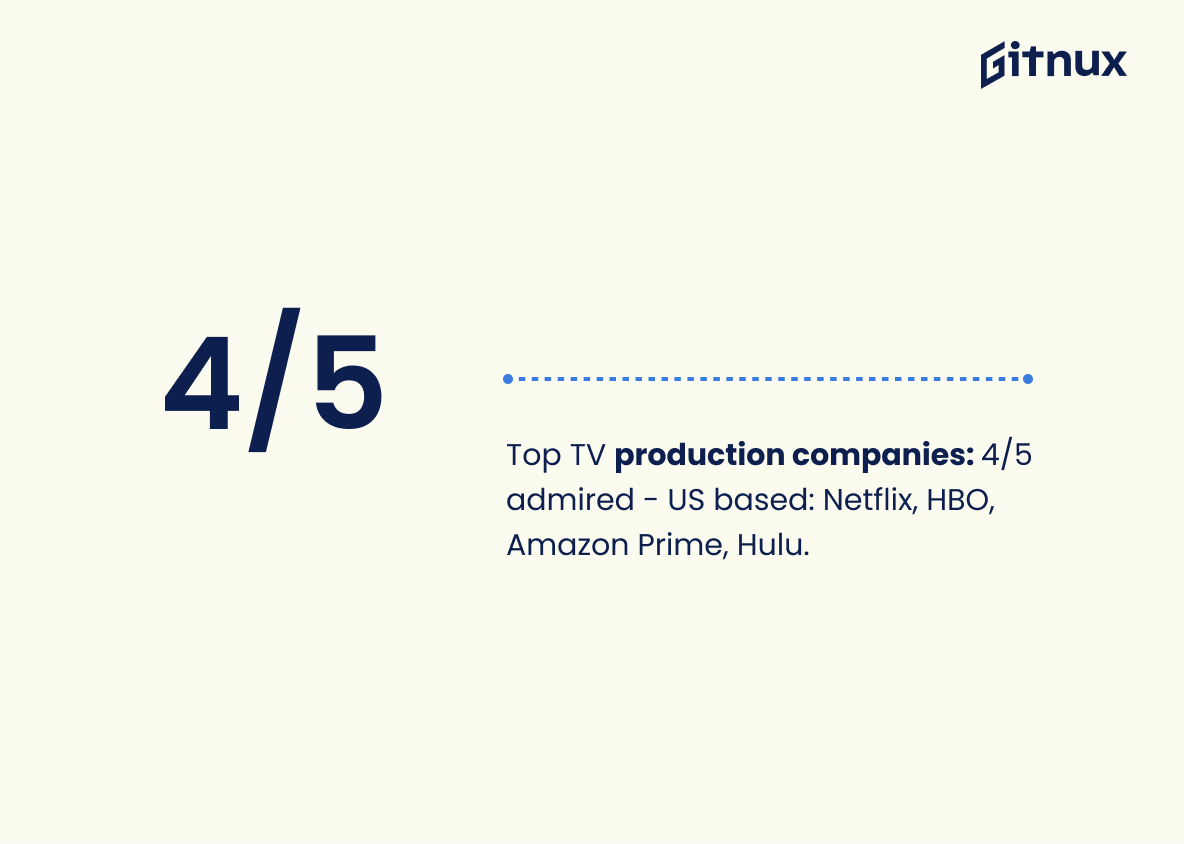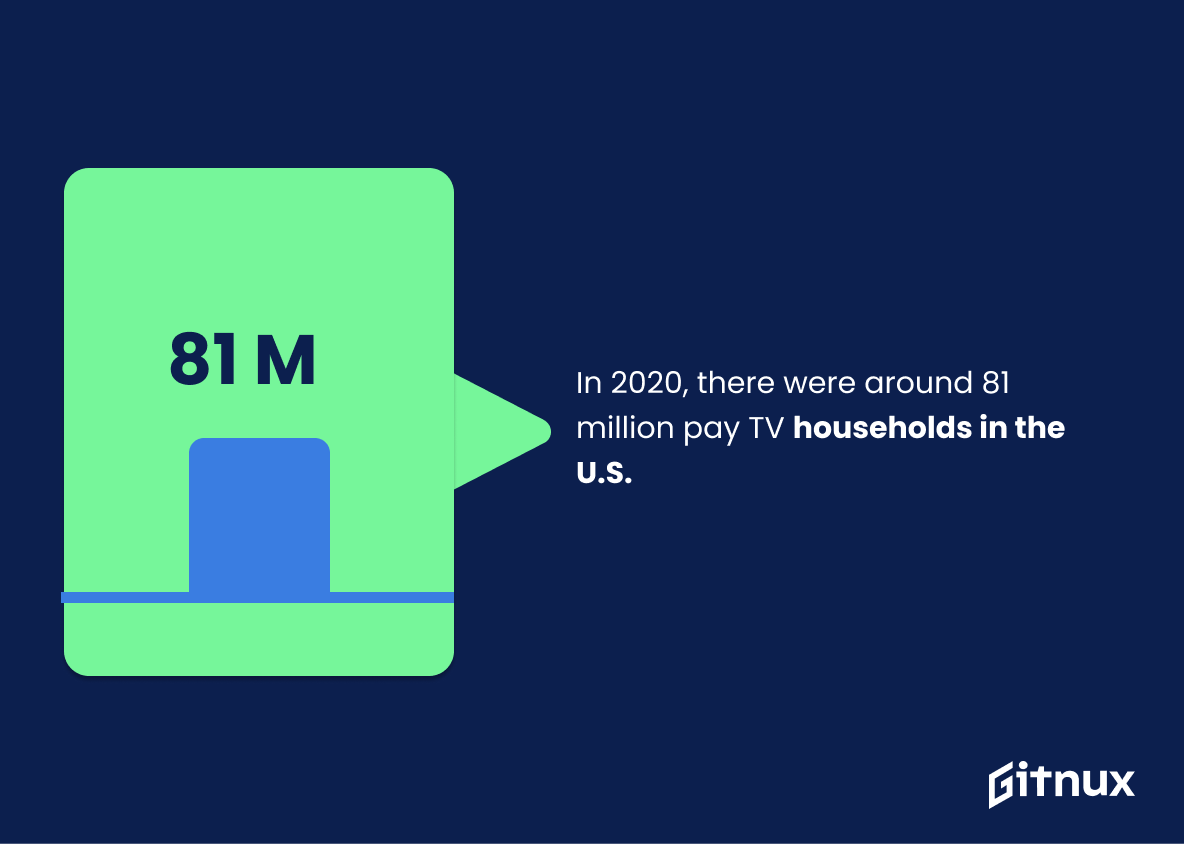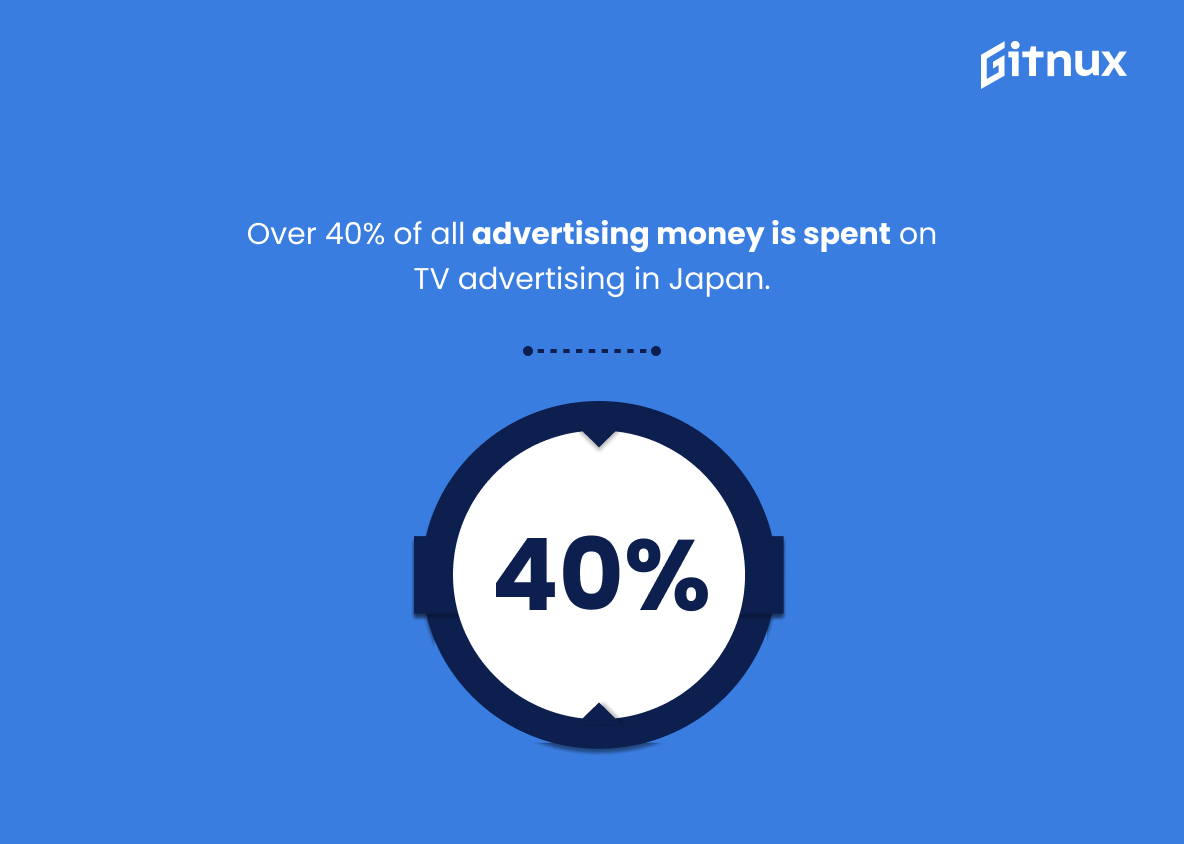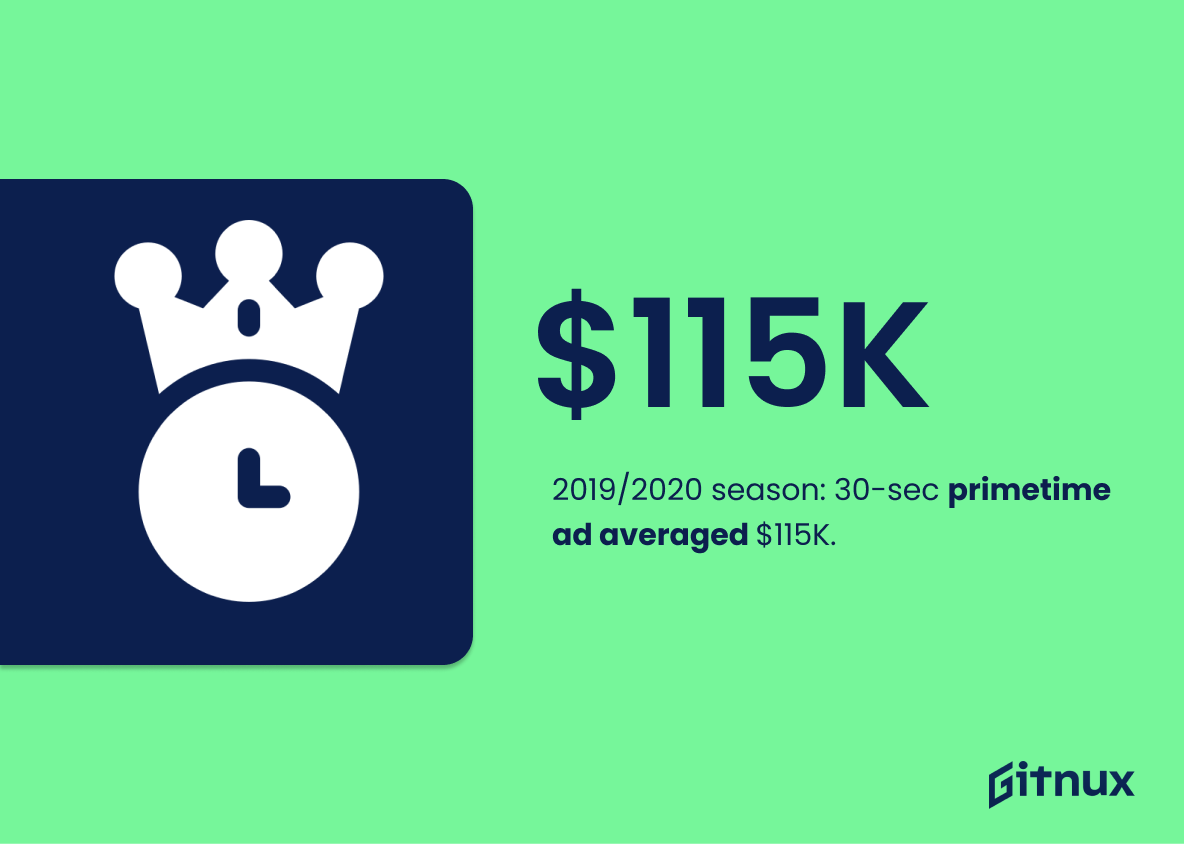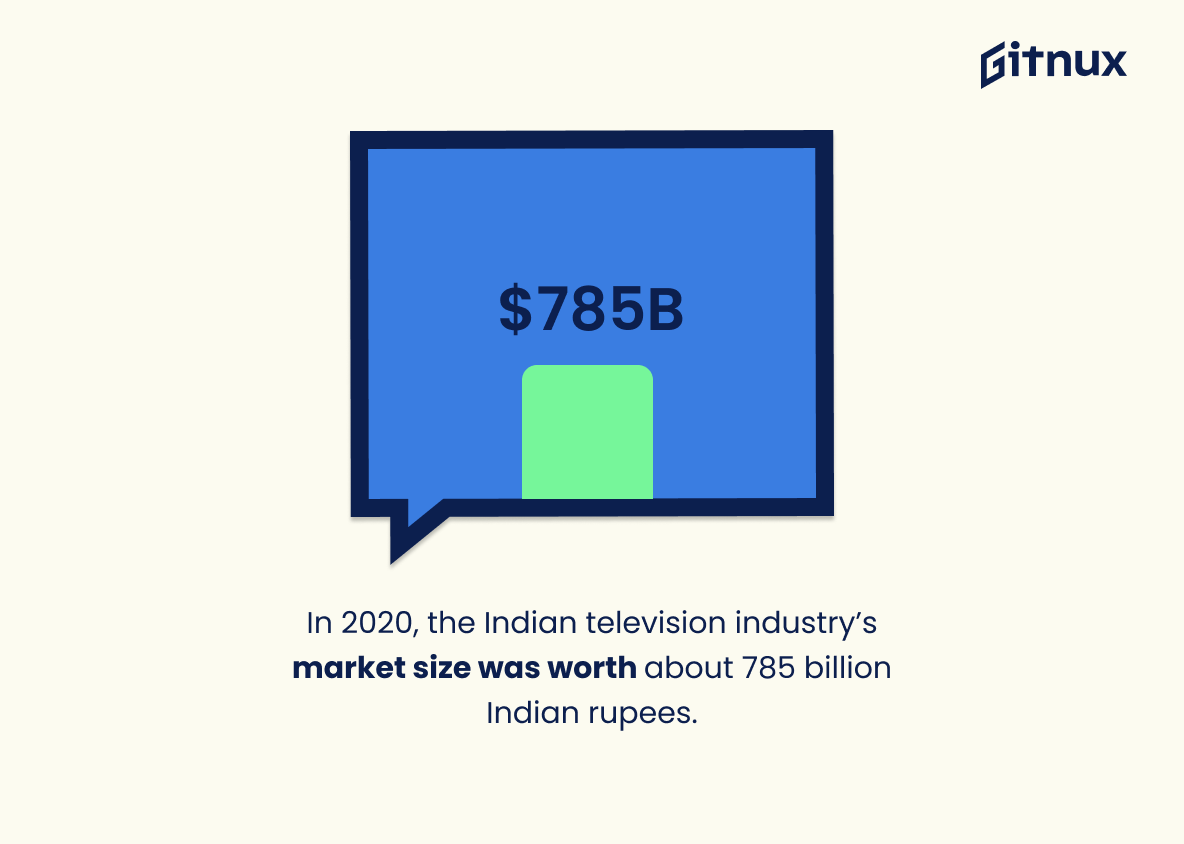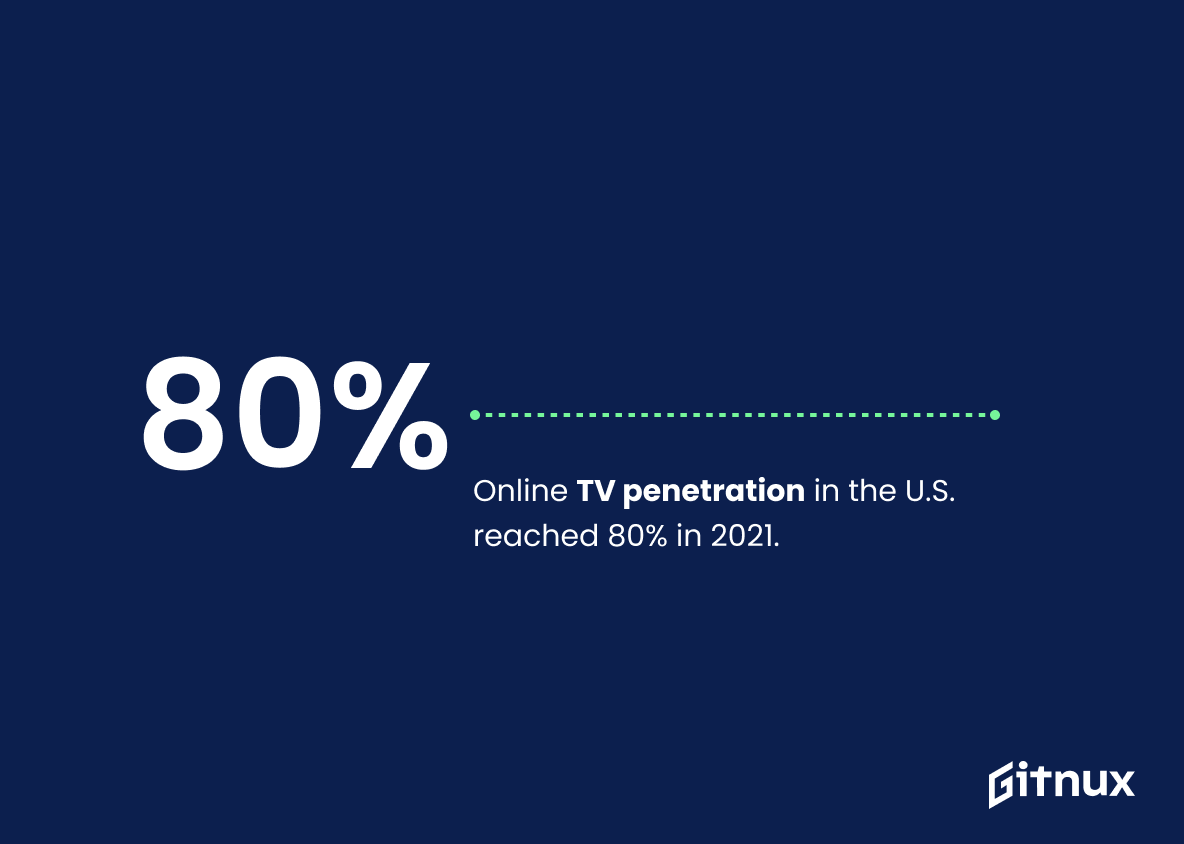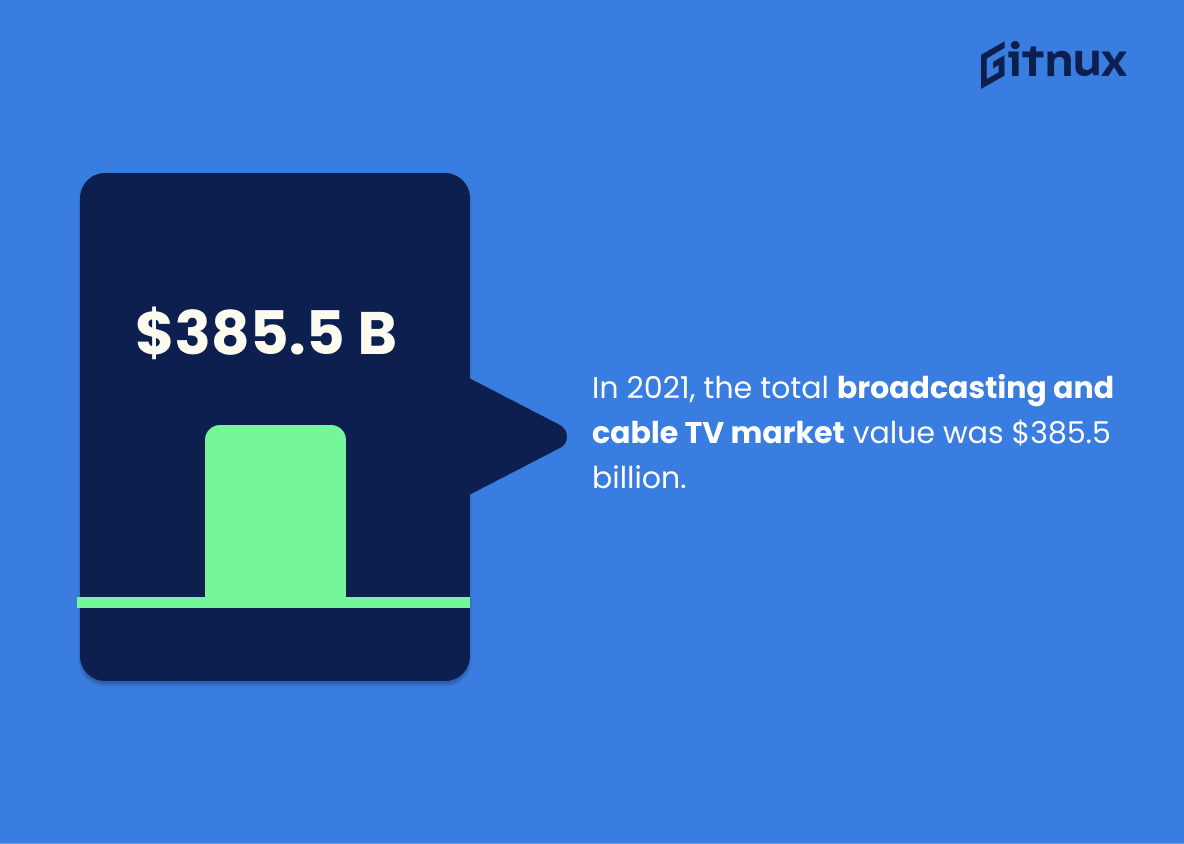Navigating the dynamic landscape of the television industry requires a robust understanding of its ever-changing statistics. This encompasses comprehendible knowledge of viewership trends, revenue streams, evolving technologies, and competitive market strategies. Our blog post today bolts into the heart of these critical details, unveiling fascinating statistics about the television industry. We invite entrepreneurs, media enthusiasts, investors, and TV buffs to join us as we delve deeper into the dynamic numbers that drive this billion-dollar industry, shaping consumer preferences and revolutionizing entertainment as we know it. Let’s turn the spotlight on, and tune into the captivating world of television industry statistics.
The Latest Television Industry Statistics Unveiled
In 2020, the value of the U.S. TV industry was estimated at $266 billion.
To fully grasp the enormity of the Television Industry in the United States, one must not overlook a salient benchmark: the industry’s whopping estimation of $266 billion in 2020. This figure telecasts a powerful narrative about the profound economic footprint the Television Industry imprints not only within the country’s borders but also on a global scale. Weaving this into our discussion on Television Industry Statistics paints a vivid picture of the sector’s influence, highlighting its monumental contribution to the American economy. It sets the stage for understanding market trends, revenue streams and forecasts the potential future growth within the industry, thus underlining its critical importance in industry-centric narratives.
In 2022, the TV advertising market in the United States is forecasted to reach $75 billion.
Given its projected worth of $75 billion, the 2022 forecast for the TV advertising market place underscores the dynamic vitality of television as a powerful platform for marketing in the United States. This quantum leap in value illuminates the TV industry’s ability to woo advertisers back to the screen, showcasing its resilience even in the digital age. This numerical forecast beautifully substantiates that television still holds a commanding position in advertising, remaining irresistibly attractive to marketers in the midst of evolving media landscape. As such, it complements the broader discussion of television industry statistics in the blog post.
As of 2021, 76% of British households have a TV streaming service subscription.
In an age where the digital revolution reshapes our viewing habits, it is unmistakably clear that British households are riding the wave of change. As of 2021, the immersive world of TV streaming services has enticed 76% of these households to subscribe. The significant percentage underscores a transition in British media culture, underscoring the gravitas of TV streaming platforms in today’s entertainment landscape.
This statistic paints a vivid image of the Television Industry’s current state, as it grapples to adapt to the rapidly evolving demands of modern viewers. It highlights a new epoch, where streaming services are not a mere supplementary thread in the Television Industry’s broader fabric, but rather a crucial element that is quickly becoming the norm. As such, it is both a beacon to industry leaders about where consumer sentiment is heading and a microscope into the transformative patterns that are shaping the future of televisual entertainment.
In 2019, TV industry revenue in China stood at approximately USD 16.42 billion.
Highlighting the impressive figure of USD 16.42 billion as the TV industry revenue for China in 2019, provides the reader with a perspective on the economic magnitude flowing through the Television space. This effective pointer, placed within a blog post on Television Industry Statistics, can act as a comparative marker for both global and region-specific performance checks. Additionally, this concrete metric might intrigue audiences with its demonstration of the sector’s robustness in China. It essentially sketches a potent backdrop for further discussion around the industry’s dynamics, trends, challenges, and opportunities.
Nearly 134.5 million smart TV units were sold worldwide in 2020.
The impressive figure of nearly 134.5 million smart TV units finding a home across the globe in 2020 beautifully encapsulates the profound zeitgeist of our digitizing world. As the ‘Television Industry Statistics’ blog post so astutely explores, TV, much like every facet of our lives, hasn’t been immune to the digital era’s transformative grasp. This sensational sales figure attests to the vibrant health of the smart TV market, firmly thrusting it into the limelight as a centerpiece of modern home entertainment. Ultimately, this statistic encapsulates not only our predilection towards high-tech electronics but also resonates with an evolving global consumer behavior trend towards integrated, internet-connected experiences.
In 2020, Netflix held a 20% share of all time spent watching television in the USA.
Picturing the television landscape in the USA, the statistic highlighting Netflix’s 20% share of all viewing time spent in 2020 offers a significant artifact. It’s a compelling slice of evidence illuminating the shift in consumer behavior from traditional TV viewing to streaming services. By boldly staking its claim, Netflix tests the balance of power, calling into question the monopoly once held by cable and satellite providers. The contours of this statistic sketch an evolving dynamic, where ‘binge-watching’ shatters the old routine of ‘prime-time viewing’. It’s a change that key industry players, advertisers, content creators, and viewers cannot afford to overlook.
The TV broadcasting sector in India was valued at Rs 820 billion in 2021.
In the dynamic, buzzing world of the television industry, each figure and estimation unearths a treasure of insights. Diving deep into the aforementioned statistic, it’s fascinating to discover that the TV broadcasting sector in India weighed a massive Rs 820 billion in 2021. Like a star illuminating the vast sky, this hefty number shines light on the prodigious size and potential of India’s Television landscape. On the canvas of a blog post about Television Industry Statistics, this figure adorns it with a stroke of economic robustness and market scale. It provides a key understanding of industry worth, fuelling strategic decisions, projections, and assessments. It’s these numbers that help in sketching the economic portrait of the industry, off, and on, the screen.
Four of the five most admired companies in the TV production sector are based in the U.S; Netflix, HBO, Amazon Prime, and Hulu.
Highlighting the prominence of U.S.-based companies such as Netflix, HBO, Amazon Prime, and Hulu showcases the dominance and influencing power of the United States in the TV production sector. Their positioning as the most admired in the industry reflects on various aspects including content creativity, innovative delivery methods, and exceptional marketing strategies. Thus, in a blog post about Television Industry Statistics, this detail forms a crucial part of the narrative, demonstrating the geographical concentration of proficiency and offering a macro outlook on global industry dynamics, business models, and the trajectory of sector-wide growth.
In 2020, there were around 81 million pay TV households in the U.S.
A glimpse into the vast landscape of the television industry reveals the striking footprint of pay-TV households. The figure – an impressive 81 million in 2020 – serves as a beacon, shedding light on the market’s dynamism and the continued value consumers place on paid television services amidst a cornucopia of viewing options. It underscores the steadfast demand for a curated and premium viewing experience, which is a cornerstone of the pay-TV model. Therefore, this statistic is not just a simple number, it pulses like a vital heartbeat for the television industry, unequivocally denoting its life and vibrancy. It infers the depth of economic relevance, customer preferences, and market survival tactics that could be instrumental in sculpting the future strategies of the television industry.
Over 40% of all advertising money is spent on TV advertising in Japan.
As we direct our gaze towards Japan, an intriguing spectacle of numbers unfolds, steadily painting an image of the television industry. A staggering proportion, decidedly more than 40%, of all advertising expenditure burns brightly on the pulsing screens of Japanese TV. This dramatic economic commitment acts as a glowing testament to the power television wields over the Land of the Rising Sun.
In a landscape often characterized by change, the significance of this figure lies in its steadfast stance, shedding light on TV’s dominant role as an advertising medium, dwarfing others in terms of expenditure. It highlights the confidence of advertisers in TV’s enduring capacity to reach millions and produce results.
Delving deeper into this blog post on Television Industry Statistics, this potent fragment of information stands as a bulwark, underscoring the economic impact and prominence TV continues to enjoy in Japan’s advertising arena. It’s not just a statistic; it’s proof of an industry’s resilience and outstanding performance in an age of ever-evolving media preferences.
During the 2019/2020 season, the average cost of a 30-second commercial spot during primetime was approximately $115,000.
The intriguing world of television industry statistics unravels some captivating narratives. The statistic stating ‘During the 2019/2020 season, the average cost of a 30-second commercial spot during primetime was approximately $115,000′ is a testimony to the immense economic power the industry holds. It not only reflects the investment advertisers are willing to shoulder for that precious half-minute of primetime visibility, but also provides a fascinating insight into how much value is placed on reaching a broad, captive audience during this peak viewing period. Ticketing their way into the viewers’ minds during primetime isn’t a gamble advertisers shy away from, despite the hefty price tag, and this revelation underscores this commitment in dollar terms. As such, it paints a compelling picture of the high-stakes economic landscape within which the television industry operates.
In 2020, the Indian television industry’s market size was worth about 785 billion Indian rupees.
Exploring the wonders of statistics, you’d find that the 2020 metrics showcased the Indian television industry’s market size as around 785 billion Indian rupees; the scale of this figure speaks volumes of the industry’s potency. Visualize this in the kaleidoscope of the global market where the television industry forms a vibrant contour. The magnitude of this statistic weaves a narrative pivotal to the Indian Television panorama, allowing a deep dive into aspects such as content development, viewership, ad spends, and the overall economic impact of this industry. Hence, in a blog post encrypting Television Industry Statistics, this figure stands as a beacon of magnitude and influence, illuminating the expansive terrain of the Indian Television Industry. Indeed, shedding light on the driving factors behind this colossal figure could unravel the intricacies of industry dynamics and potentially provide forecasting insights for the future.
Online TV penetration in the U.S. reached 80% in 2021.
Deciphering the relevance of the statistic – “Online TV penetration in the U.S. reaching 80% in 2021,” is akin to illuminating the digital transformation narrative of the television industry. The statistic helps to underline how Television viewing habits in the U.S. are pivoting from traditional cable TV to online platforms. The high penetration rate spotlights a new norm where most Americans now consume TV content digitally, marking a monumental shift in the industry dynamics.
Highlighting this number, additionally, is important as it discloses not only the acceptance of online TV platforms but also lays bare the enormous market these platforms have been able to concoct in a remarkably short span. It signifies an explosive growth opportunity for businesses involved in delivering digital TV services, smart TV manufacturers, streaming app developers and content creators alike.
By maturing into a mainstream medium, online TV is radically redefining the television industry’s landscape, nudging enterprises to remain technologically nimble, to adapt and evolve. Consequently, the 80% figure isn’t just a statistic – it’s an industry-wide wake-up call echoing the evolving viewer preferences and the inevitable future of television consumption.
In 2021, the total broadcasting and cable TV market value was $385.5 billion.
To paint a vivid picture of the magnitude and influence of the television industry, picture this: in 2021 alone, the combined market value of broadcasting and cable TV soared to a staggering $385.5 billion. This figure underscores the significant role the Television industry plays in the economic landscape. Not just a siren of entertainment, this industry raises the economic bar by contributing bountifully to the B2B and B2C markets. Envision the swathes of people—creatives, technicians, marketers—all interconnected in this billion-dollar space. This economic powerhouse shows no signs of dimming as it boasts an arresting potential for growth and advancement. An insight such as this serves as a shining beacon, illuminating the state, scale, and significance of the television industry in our society today.
In 2022, connected TV devices are expected to reach 820 million units.
Forecasting the meteoric rise in the number of connected TV devices to 820 million units in 2022 undoubtedly underscores a pivotal transformation within the television industry. This compelling figure not only signifies an ever-increasing consumer shift towards viewing habits deeply embedded in cutting-edge technology and internet connectivity, it illuminates the future of television in glorious high-definition detail. With this projected growth, expect vibrant discussions within blog posts about Television Industry Statistics to revolve around alterations in the advertising landscape, driven by data collection capability of connected devices, as well as a heightened focus on viewer personalization and on-demand content. The trajectory of connected TV devices appears to be plotting a new chapter in the story of the television industry, filled with both promise and challenge.
The Middle East and North Africa TV market are estimated to reach 3.23 billion U.S. dollars by 2024.
Projected to soar to impressive heights, the Middle East and North Africa (MENA) TV market’s worth is anticipated to hit the 3.23 billion U.S. dollars mark by 2024. Illuminating the path for potential players in the television industry, this figure underlines the enticing expansion and investment opportunities that lay nestled within this region’s media landscape.
For those considering venturing into new business horizons, this astronomic figure serves as a beacon, lighting up prospects of potential booming returns and eye-catching profit margins. It also accentuates the far-reaching influences of the television medium, not just as an entertainment tool, but a powerful magnet for advertising revenue and a massive contributor to economies within the region.
Given this prosperous projection, industry stakeholders, investors, and strategists can sharpen their focus on this region, charting market penetration tactics or fortifying their presence to capitalize on this robust growth. For bloggers crafting posts on Television Industry Statistics, this particular information acts as compelling evidence of the TV market’s strength, lending credence and depth to their discussions on industry trends, growth drivers, and future potentialities.
The TV production market in Europe is projected to reach USD 41.69 billion by 2025.
Unveiling the trajectory of the television production market in Europe until 2025, with a predicted leap to USD 41.69 billion, provides exciting insights into a prosperous horizon. In a blog post focusing on Television Industry Statistics, it infuses a foundation of engaging discussion. With this expanding economic influence, blogs can delve into evolving trends, markets, and strategies, propelling deeper understanding of the industry’s potential for stakeholders and enthusiasts alike. This potent financial forecast not only paints an optimistic future but also underscores the increasing importance of TV production within Europe’s entertainment landscape.
Pay-TV revenues were expected to decline by 22% to $150.6 billion between 2020 and 2026,
The prospect of Pay-TV revenues plummeting by 22% to $150.6 billion between 2020 and 2026 weaves a captivating narrative of a television industry standing at the precipice of monumental change. It signals an impending shift in power dynamics in the broadcasting landscape, with traditional Pay-TV losing its lion’s share in revenue generation. This crucial piece of data implies a seismic shift in consumer preferences and viewing habits, painting a picture of an industry tilting towards streaming services and on-demand content. It paves the ground for the discussion about the future of Pay-TV and its place in the wider broadcasting ecosystem. This propels us into a fascinating exploration into the changing preferences of TV viewers, potentially driving fresh strategies and trajectories for the industry.
Conclusion
In conclusion, the television industry is continuously evolving, with new trends, technologies, and challenges emerging regularly. The various data and statistics we’ve shared highlight the changing landscape of this vibrant industry. From viewership trends to advertising expenditures, growth of streaming platforms, and the impact of social factors, these facets all together illustrate a dynamic, multi-dimensional industry filled with opportunities and challenges. Staying informed about these key statistics is crucial for anyone involved in the television industry or planning to dive into it. As the industry continues to adapt and innovate, tracking these statistics will give a competitive edge in shaping strategies for the future.
References
0. – https://www.www.ofcom.org.uk
1. – https://www.www.digitaltvresearch.com
2. – https://www.www.businesswire.com
3. – https://www.www.broadcastingcable.com
4. – https://www.variety.com
5. – https://www.www.ibef.org
6. – https://www.www.statista.com
7. – https://www.advanced-television.com
8. – https://www.www.globenewswire.com
9. – https://www.www.emarketer.com
10. – https://www.www.artuji.com
